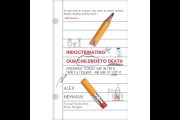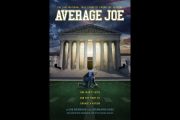
Al Gore’s new book, Our Choice: A Plan to Solve the Climate Crisis, is an exercise in emotionally charged propaganda calling for mankind to give up its standard of living and accept large increases in government power for the sake of the environment. Gore draws the conclusion, “The only meaningful and effective solutions to the climate crisis involve massive changes in human behavior.” Characteristically missing from his argument is evidence that humans are a significant cause of global warming. Forgoing logical appeal, he instead targets readers’ emotions, detailing supposed results of warming that threaten Earth’s very existence.
The introduction presents readers with heart-wrenching scenes. There is a full-page picture of an Eskimo woman whose house is tumbling down from melting permafrost; a photo of an offshore oil rig damaged by Hurricane Katrina (with the implication that SUV emissions generated the storm); a dazzling shot of sand dunes the UN claims are threatening fertile fields due to global warming; flood victims in Mexico wading forlornly in chest-high water somehow caused by man’s activities; and a helpless little girl refugee from a “climate-influenced” conflict in the Darfur region of Sudan. Throughout the rest of the book Gore blames anthropogenic (human-caused) global warming for these and virtually all other human tragedies. Proof is apparently unnecessary and hinders our efforts to “get on with the job.”
From an aesthetic point of view, Our Choice is a spectacular, high-budget book. Quality photographs embellish many pages, and the illustrations of things like geothermal systems and pebble-bed reactors are top notch. The book seems a cross between a coffee table-grade travel book and a copy of Popular Mechanics. Unfortunately, the publisher decided to include more than photographs and illustrations, and there is the rub. A large part of the text reads as if it were written by a staff of slick lawyers from the National Resources Defense Council or Greenpeace. It is pure environmentalist propaganda. Then there are the parts written by Gore himself, easy to identify since they sound punchy, just the way he speaks. However, quite a bit is written by engineers or other technical folk who aren’t quite as extremist as Gore and his fellow activists. Even so, every page of the book will lead naïve readers astray through slyly administered misinformation.
Lies are so powerful by nature. A statement such as, “Military expenditures by the United States could be reduced by tens of billions of dollars per year if we switched to renewable sources of energy,” is a hideous lie, easily told. To refute it would first require giving readers something of an education in the costs and nature of energy. The lie takes three seconds to produce and many hours to refute. (On a positive note, once someone knows the truth, the propagandist is vanquished in that person’s mind forever.)
It would take a book as long as Our Choice to list all the lies it contains, but here are a few examples:
• “A large percentage of the energy contained in the fuels burned to produce electricity is lost.” “Sixty-five percent of all the energy consumed to generate electricity in the United States is lost.” This sounds so wasteful, as if engineers sat around thinking of how they could decrease the efficiency of power plants. The opposite is true! There are limits to the thermodynamic efficiency of a “heat engine” known as the Rankine cycle. In a coal-fired plant, this theoretical limit is directly related to the difference between the inlet temperature (about 1,050°F) and the discharge temperature (approximately 90°F). Engineers spend careers in developing methods to increase efficiency — a fraction of a percentage point at a time — toward the theoretical maximum. To dismiss this as “energy being lost” ignores the fact that the quality (usefulness) of electrical energy produced is far greater than the heat content of the coal being burned.?
• “Once the world makes a clear commitment to shifting toward renewable energy,” progress will happen quickly. “Consider, for example, what has happened to the cost and effectiveness of computers during the past 20 years.” We are constantly told R&D in the fields of alternative energy will make it competitive with current forms of generation, and this same computer-chip analogy is dragged out as proof. But after 30-odd years of this environmentalist propaganda, windmills are scarcely more efficient and very near the theoretical limit in converting wind to electricity. Similarly, solar cells are nearing the limit of capturing photons with the energy levels required to produce electricity. No amount of research is going to make the wind blow harder or the sun shine brighter. And while it would be entirely feasible to put a million solar cells on a chip where there is only one now, you wouldn’t get a microwatt more electrical output.?
• “The Atomic Energy Commission predicted at the end of the 1960s that the United States would have more than 1,000 nuclear power plants operating by the year 2000. But only a tenth of that number were ever built.” Well, duh, Al. It was your buddies in the environmental-extremist camp that kept filing lawsuits to make nuclear power prohibitively expensive. Had they stayed out of it, there is little doubt we would have 1,000 reactors today, and your hated coal would still be in the ground.?
• “The production of charcoal is one cause of deforestation in developing regions where people use it for cooking. Seen here in Liaoning, China, the process emits CO2 and black carbon.” At the behest of the international environmental lobby last January the government of Chad outlawed charcoal because of its emissions of CO2. This caused a riot in the streets by women whose only method of cooking for their families was being taken from them to pacify the environmental extremists. Their plea was, “Kill us now. That is better than starving to death.”?
• “The Amazon is the largest rain forest on earth, yet each year more than 10,000 square kilometers (3,900 square miles) of it are destroyed.” Al, that’s so 80s. You need to listen to your buddies at the New York Times who wrote a January 29, 2009 article entitled “New Jungles Prompt a Debate on Rainforests.” The article read, “For every acre of rainforest cut down each year, more than 50 acres of new forest are growing.” Say, if this global-warming thing doesn’t work out for you Al, perhaps you can convince people that a world government is needed to fight a takeover of the planet by the Amazon jungles — oops, I mean rainforests.?
• “California leads the way” in smart energy production and usage. “Since the energy crises of the 1970s, California’s laws have encouraged efficiency. Over the past 25 years, the state’s per capita electricity use has remained flat, while that of the rest of the U.S. has jumped by 50 percent.” Actually, California leads states in a race toward financial bankruptcy, heavily precipitated by its bankrupt energy policies. How many other states had rolling brownouts because they lacked generating capacity and proposed laws forcing utilities to maintain their inefficient generating capacity even though it was costing them money? Two sure ways California kept energy usage low were by having the highest energy rates in the country and forcing thousands of businesses out of state owing to energy costs and taxes.?
• “Exxon Mobil was giving millions of dollars to 39 groups which misinformed the public about climate change.” Exxon Mobil did give a grand total of $23 million to global-warming skeptics. Compare that to the $79 billion from U.S. taxpayers for “climate related” expenditures, plus at least that amount from leftist governments around the world, plus the push by financial institutions such as Goldman Sachs to spread the global-warming myth so they can be the middleman between productive entities and their sources of energy — for a commission, of course.
After indoctrinating readers with these lies — and many like them — Al Gore posits: “The real solution would include both a CO2 tax and a cap and trade system, and I believe that will eventually be our choice.” Gore does not spell out the ramifications of this “choice,” nor does he offer options. So we must spell out the choices more clearly for him.
Choice A: Continue living the lifestyle you have enjoyed in America because of the great abundance produced by (relatively) free markets and (relatively) limited government. Use your energies to become rich if that is your goal, or to serve others if that is what your conscience tells you to do. Live where you want and can afford to live, drive whatever kind of vehicle you want to drive, eat what you want to eat, have as many children as you want and can afford. Enjoy the explosion in technology and its attendant increase in the standard of living brought about by free people.
Choice B: Let the amount of CO2 you generate be the focus of your thinking. Strive to live in smaller homes so there is less energy required to provide heat. (Cooling is a luxury the environment cannot afford.) If you must have a car, make sure it is underpowered and preferably just large enough to carry two passengers and a few packages of tofu. Eat only organic foods and campaign to eliminate non-organic fertilizers, even though without them many millions of people would starve to death. But that’s OK, since we don’t need people. And you shouldn’t be having any babies since they come complete with an undesirable carbon footprint.
Choice A can be had without strong governmental forces to direct your life. Historical and present economies have shown the less government there is, the better off the citizenry. Choice B only works when government insures you make the “right” choices. Wrong choice — too bad — big fine or jail time. And if you’re really bad, well, as mentioned, we have too many people anyway. Gore’s contention is that Choice A will lead to run-away production and excessive materialism. This, in turn, will lead to excessive CO2 being generated, resulting in tragic global warming. And unless you think simply eliminating CO2 will stop the rush toward climate catastrophe, Gore has discovered additional “greenhouse gases,” or pollutants, that he feels should also concern you: methane, black carbon, nitrous oxide, carbon monoxide, and volatile organic compounds (VOCs) such as emissions from pine trees. If you thought yourself safe because you’re not involved in CO2-producing activities, you just haven’t been worrying enough. Indeed, according to the former Vice President, if we are concerned about the planet, future generations, and, certainly, the animals, we had better opt for Choice B.
Obviously this is a big step, from Hummer to Prius to bus, from pork chops to poke salet, from having a large family to maybe one child, from freedom to living under a nanny state that monitors your thermostat, credit cards, miles driven, etc. So where is the convincing, compelling evidence CO2 and its fellow greenhouse culprits are causing global warming? The topic isn’t even discussed in the book. Apparently Gore feels science has already settled the matter.
His horror-fiction docudrama An Inconvenient Truth includes an infamous scene in which Gore uses a ladder to show historical temperatures oscillating between reasonable limits but suddenly climbing out of control in recent years. This same graph appeared six times in the third assessment report (TAR) of the Intergovernmental Panel on Climate Change (IPCC) and is well known as the “hockey stick,” credited to Professor Michael Mann at Penn State University. Some 2,000 IPCC “scientists” went along with it, but two Canadians — not on any government payroll — found that 99 percent of data sets they entered in Mann’s equations produced the same hockey stick-shaped curve. A congressional investigation condemned the “hockey stick” four months before release of Gore’s Nobel Prize winning film. Gore knew the graph was fatally flawed. But we’ve got a planet to save, you know, and can’t allow minor details to stop us.
In lieu of proof, Gore presents apocalyptic statements by government scientists who all seem to have the same international leftist political views. Their claims are based on faulty data, such as that from 22 models highlighted in the book and used by the IPCC to predict future global warming. Not even one of them predicted the cooling trend we have experienced over the past decade, which begs the question, “How is the science ‘settled?'” This is the dirty little secret that politicians and their lackeys don’t want you thinking about while they wing their way to Copenhagen with dreams of world government and international taxes dancing in their heads: There is no measurable evidence that humans cause global warming.
The inside cover of Our Choice quotes a Biblical passage, Deuteronomy 30:13, which reads, “I’m offering you the choice of life or death. You can choose either blessings or curses.” Your reviewer agrees it is an apt quote — except in the diametrically opposite sense of Gore’s intent. Indeed, choosing Gore’s direction toward bigger and eventually tyrannical government that forces human beings to sacrifice the results of their labors for a phantom future reward will result in the death of millions. The example of Chad’s grief-stricken women stripped of their only source of fuel should serve as a painful reminder. The curse of want and tyranny brought about by global government is sure as the sunrise. Gore’s choice is the road to Hell on Earth.
Our Choice: A Plan to Solve the Climate Crisis, by Al Gore, Emmaus, Pa.: Rodale, Inc., 414 pages, paperback.
Photo of Al Gore at book signing: AP Images



